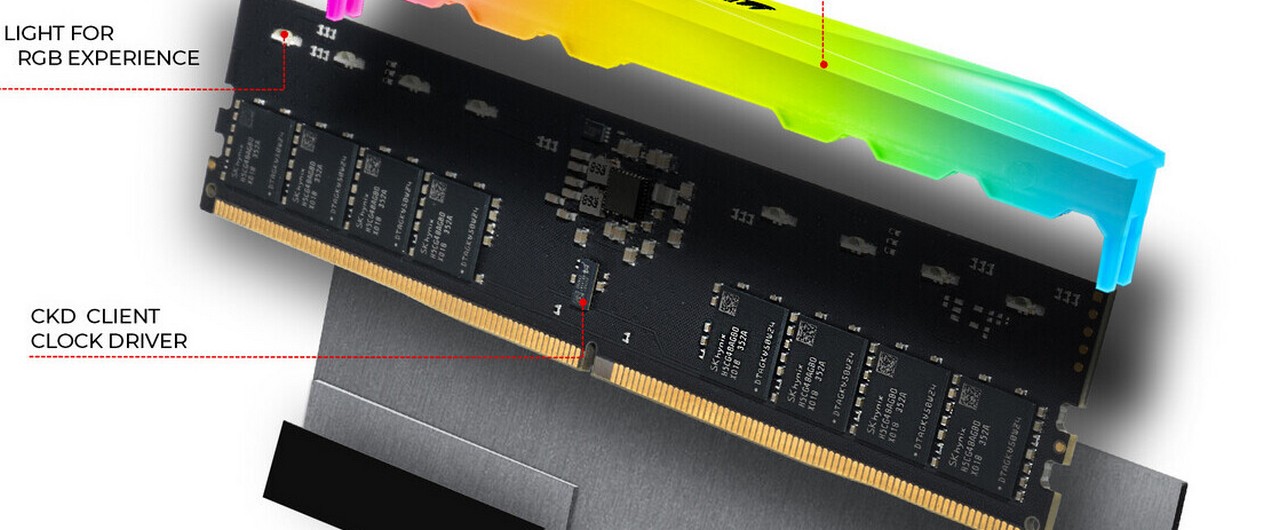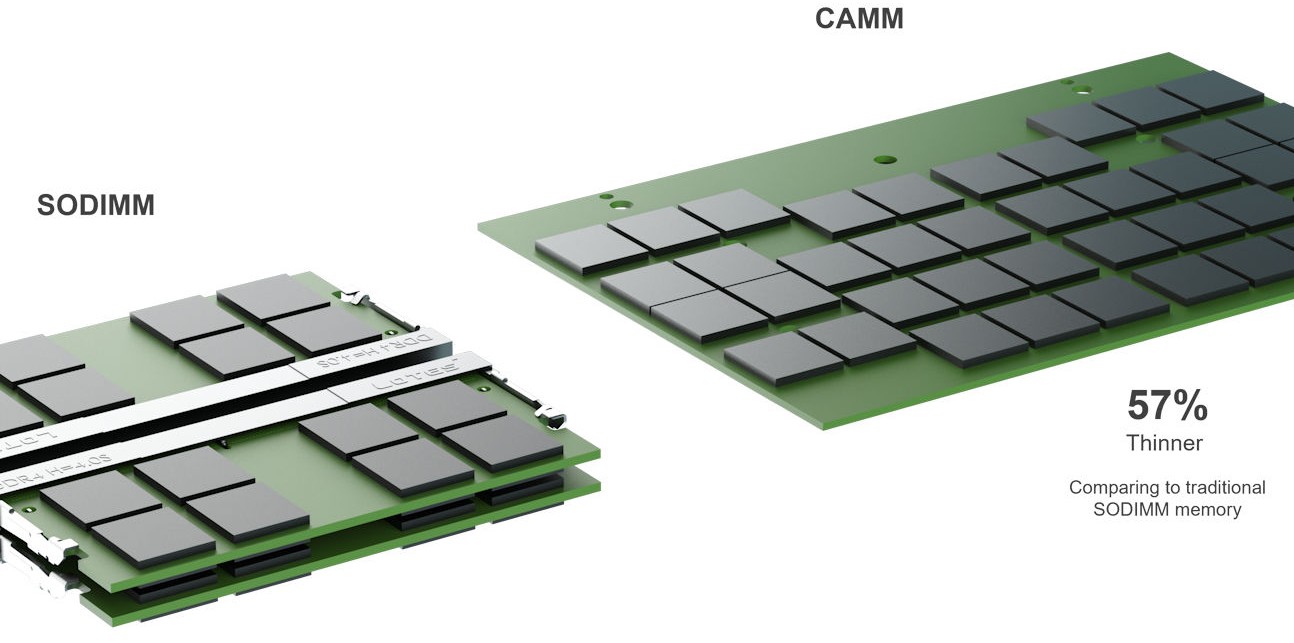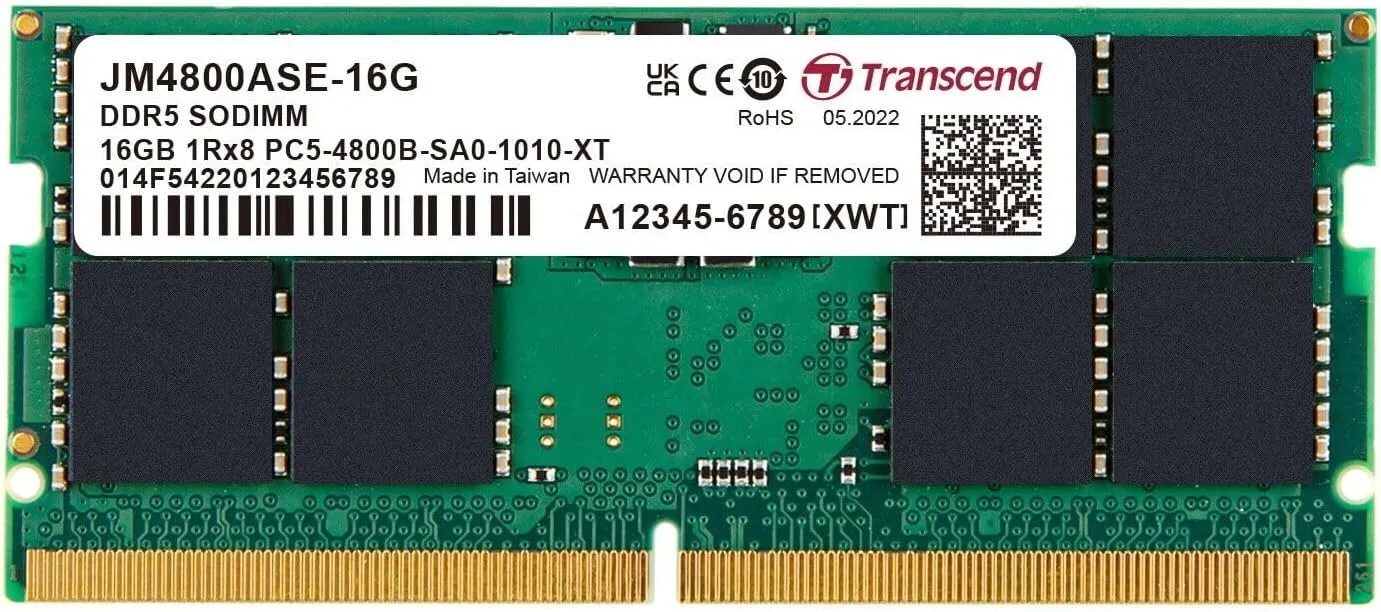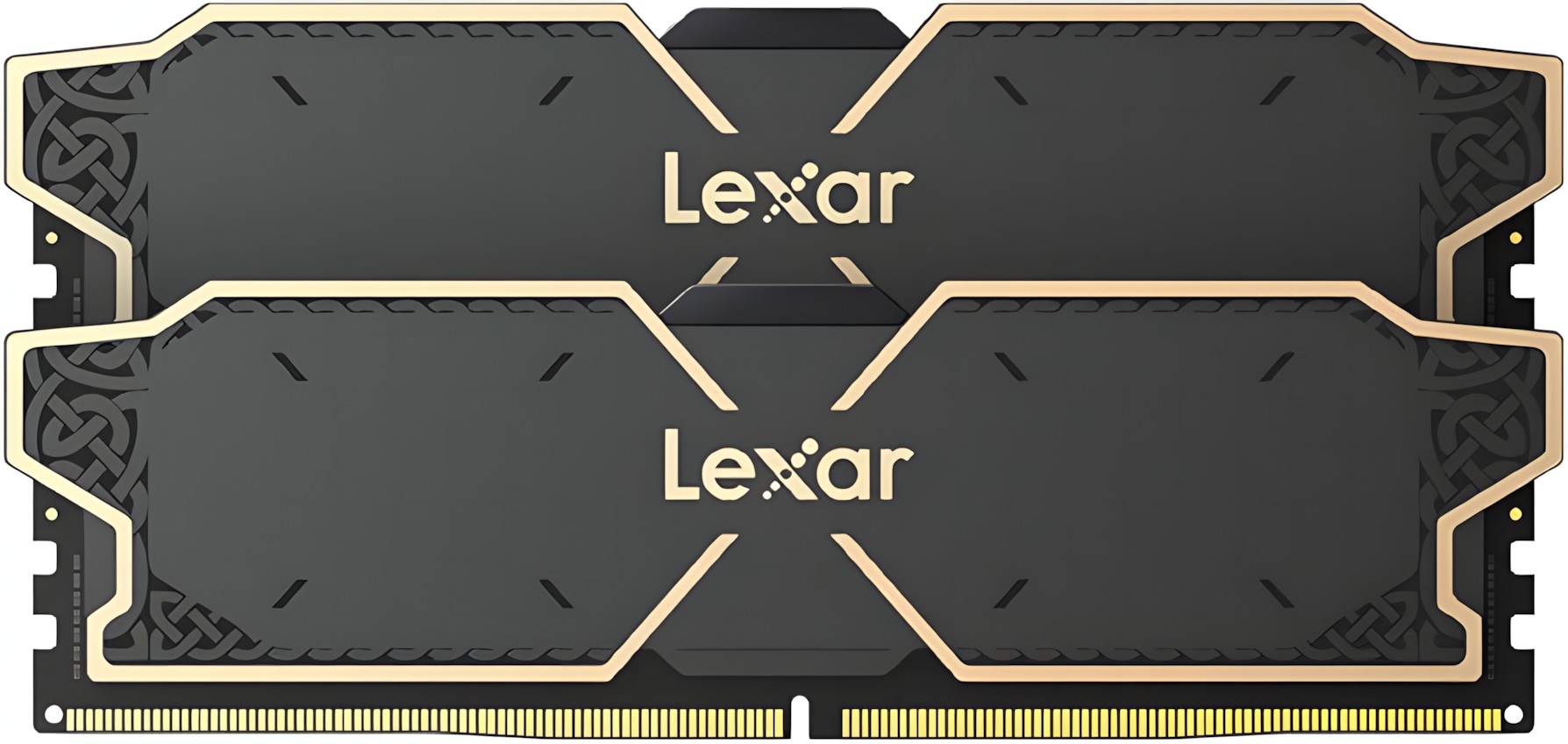New DDR5 Memory Trends: CUDIMM, CSODIMM, CAMM, EXPO, Non-Binary
We independently test the products and technologies that we recommend.

CUDIMM — stands for Clock-equipped Unbuffered Dual In-line Memory Module. That is, it is an evolutionary development of the classic desktop memory format called UDIMM. It is distinguished by the presence of a CDK clock generator, which analyzes the signal from the memory controller in the processor, cleans it from noise and distortion, and then transmits it to the memory chips. This allows high-frequency memory to work more stably.
Moreover, the PC user will be able to choose one of three clock generator operating modes. In the productive Dual PLL mode, two virtual memory channels on one physical DDR5 module are controlled separately. It is recommended only for flagship motherboards with a high-quality VRM power supply subsystem. If stability is more important, it is worth switching to the Single PLL mode, in which the CDK generates the same signals for both channels.

The third mode, PLL Bypass, completely disables the clock generator on the memory module, relying solely on a similar controller in the processor. In essence, CUDIMM turns into a regular UDIMM, which is quite normal for frequencies up to 6000 MHz. Mass implementation of CDK is planned starting from 6400 MHz. Although there are already 7200+ MHz memory kits without CDK, even experienced overclockers have a hard time running them.
CSODIMM and CAMM are potential replacements for the current SO-DIMM notebook memory format. It is difficult to predict which of the two varieties will become more popular. It is quite possible that laptops will finally switch to LP-DDR5, soldered onto the motherboard without the possibility of upgrading. Most likely, this is exactly what will happen with budget laptops and thin ultrabooks. Then CSODIMM and CAMM will have to compete for the market of gaming laptops and stationary mini-PCs.
The shape, size and pinout of CSODIMM completely replicates SO-DIMM, only adding a CDK clock generator to it. The downside is increased power consumption and heating. But next door on the PCB there is also a hot ECC error correction chip. It was optional for DDR4, but became mandatory for DDR5. At the moment, CSODIMM seems to be a reasonable choice, rather, for nettops based on Ryzen APUs with a powerful integrated video card.

For laptops, perhaps, the best choice is the CAMM (Compression Attached Memory Module) memory. This is a horizontal format that is sandwiched on top of the motherboard and secured with screws for greater reliability. This completely eliminates the common problem of SO-DIMM, namely, accidental falling out of the slot due to shaking during transportation of the laptop. On the front side of the CAMM printed circuit board are the memory chips, on the back - copper contacts.
EXPO and Non-Binary are two more innovations of DDR5, the first one is more for desktop PCs, the second one for laptops. The Extended Profile for Overclocking memory auto-overclocking technology, or EXPO for short, is AMD's answer to the long-standing Intel XMP. So far, it is used only for memory modules up to 6000 MHz. With a further increase in frequency, the memory controller in the Ryzen processor can switch to 1:2 mode, which neutralizes the effect of overclocking.
Like XMP, the EXPO profile provides for an optimally selected frequency, primary timings and supply voltage. EXPO memory initializes slightly faster during a cold start of a PC with an AMD processor than XMP. And the time difference with non-overclocker JEDEC memory without factory overclocking is simply colossal. The motherboard can go through the memory parameters for half a minute before skipping the BIOS phase and starting to load the operating system.
figure class="post-center-pic">
But Non-Binary memory is more relevant for laptops, although non-binary for desktop PCs is also found. Chip manufacturers (Samsung, Micron, Hynix) have moved away from the classic concept of doubling the volume (8, 16, 32 GB) and released intermediate options. Notebook SO-DIMM modules for 12 GB or 24 GB allow you to dial 24 or 48 GB in two slots, respectively. You can install 4x48 GB in a desktop PC, which will give a total of 192 GB for a server.
Laptop upgrade
| Artline.ua | 2 047 ₴ | To Store |
| MTA.ua | 2 199 ₴ | To Store |
| Nkt.ua | 2 011 ₴ | To Store |
| Flick І Все для геймерів | 2 039 ₴ | To Store |
| Itbox.ua | 2 004 ₴ | To Store |
Transcend JetRam DDR5 is a RAM from a Taiwanese brand with almost 35 years of history. It is made in a shortened SO-DIMM format, designed for laptops, nettops and monoblocks, i.e. computers in a monitor case. As expected from DDR5, it is equipped with PMIC and On-die ECC chips. The first evenly distributes power between two virtual channels.
The second monitors data recording errors, corrects the simplest ones on the fly, and in the case of more complex ones sends a request for re-recording. The frequency of 4800 MHz will probably start even on budget processors, for example, Intel N100 (new name Celeron). The supply voltage is 1.1 volts, and the CL40 timings correspond to the JEDEC specification.
16GB modules already have a full number of memory banks, so they are on average 20 percent faster than 8GB ones. Transcend is one of the last companies that still uses old-school green textolite. However, in an opaque laptop case it will not be visible anyway. The JetRam series memory traditionally comes with a lifetime warranty.
For AMD fans
Lexar Thor DDR5 is a ready-made kit of two 16 GB UDIMM memory modules, a total of 32 gigabytes, with a frequency of 6000 MHz. At the moment, this is the maximum frequency supported by both overclocking technologies: Intel XMP and AMD EXPO. The corresponding profiles are written to the SPD chip, where you can also save a third user profile.
The timings are CL32, which is even better than the slower 4800 MHz JEDEC memory. However, the supply voltage is increased to 1.35 V, which is easily handled by the aluminum radiator. Visually, it resembles Mjolnir, the hammer of the Scandinavian god of thunder and lightning Thor, after whom the Lexar memory is named. There is no decorative backlighting, this is a privilege of Lexar Ares.
Although the Lexar brand previously belonged to the American company Micron, South Korean Hynix memory chips are used. Now they demonstrate the best overclocking potential among all DDR5. By manual overclocking, it will be possible to raise the frequency to 6400 MHz. The main thing is that the Ryzen processor does not let you down and works in synchronous mode 1:1, also known as Gear1 for Intel Core.
For overclocking

| Novateh.com.ua | 8 185 ₴ | To Store |
| Denika.ua | 7 736 ₴ | To Store |
| Timesport.com.ua | 7 642 ₴ | To Store |
| Rozetka.ua | 10 788 ₴ | To Store |
Patriot Viper Extreme 5 RGB is one of the fastest whales of RAM, which exists not only on paper. Its frequency is 7800 MHz or, more precisely, MT/s, that is, millions of transactions per second. Moreover, the price is only slightly higher than that of DDR5 with a typical frequency of 5600-6400 MHz. Another thing is that you will need a flagship motherboard and an Intel processor with the K index.
For a simpler computer, there are two alternative XMP profiles. The first one is 7600 MHz at CL36 and 1.45 volts, the second one is 7400 MHz with exactly the same timings and supply voltage. The lower frequency profile is clearly aimed at the Ryzen 8000G series of processors with a powerful iGPU. Even the lack of support for AMD EXPO auto-overclocking will not be a problem.
The radiators here are not just for beauty, but really effectively dissipate heat. The RGB backlight adds visual gloss, which can be synchronized with other PC components using Gigabyte Fusion, MSI Mystic, ASUS Aura or ASRock Polychrome technology. The Viper Extreme 5 series has even faster 8200 MHz memory, but without RGB.
Articles, reviews, useful tips
All materials


















